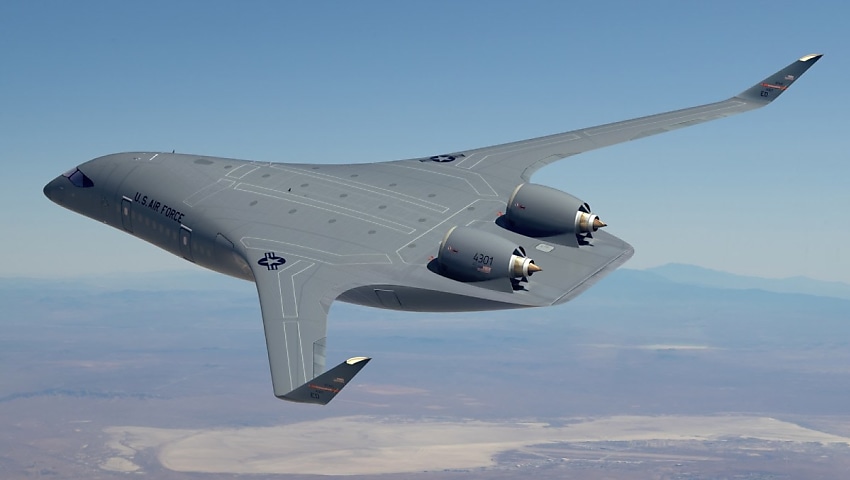Development of a blended wing body prototype aircraft has been announced by the US Department of the Air Force in partnership with California aerospace company JetZero.
To continue reading the rest of this article, please log in.
Create free account to get unlimited news articles and more!
The DAF selected JetZero to develop the blended wing body (BWB) aircraft prototype as a future air platform for department and commercial industry options on 16 August this year.
A blended wing design is expected to give a high-aspect-ratio wing, decreasing aerodynamic drag by at least 30 per cent and providing additional lift compared to traditional tube-and-wing aircraft designs.
It’s also expected to bring increased efficiency and will enable extended range, more loiter time, and increased payload delivery efficiencies and capabilities that are vital to mitigating logistics risks.
US Secretary of the Air Force Frank Kendall said several military transport configurations are possible with the BWB.
“Blended wing body aircraft have the potential to significantly reduce fuel demand and increase global reach,” he said.
“Moving forces and cargo quickly, efficiently, and over long distance is a critical capability to enable national security strategy.”
The US Department of Defense plans to invest $235 million over the next four years to fast-track the development of similar transformational dual-use technology, with additional private investment expected, as outlined in the fiscal year 2023 National Defense Authorization Act.
The funding is available through collaboration between the Department of the Air Force, the National Aeronautics and Space Administration, and the Defense Innovation Unit, with assistance from the Department of Defense’s Office of Strategic Capital.
The Air Force Operational Energy Office expects completion of initial flight testing as early as 2027.
US Air Force energy, installations and environment assistant secretary Dr Ravi Chaudhary, a former C-17 Globemaster III pilot and engineer, said recent technology advancements in structural design, materials technology, manufacturing, and other areas have made large-scale production achievable for the BWB concept.
“It’s been a little over a hundred years since a few brave Airmen took to the skies and proved the first aerial refuelling capability, extending the global reach of our Air Force,” Dr Chaudhary said.
“This announcement marks another game-changing milestone for the Air Force in our efforts to maintain the advantage of airpower effectiveness against any future competitors.”
It’s hoped the commercial industry such as passenger airlines and air freight companies, could benefit from development of the technology as well, increasing available cabin or cargo space while decreasing operational fuel costs.
US Deputy Secretary of Defense Kathleen Hicks said for the military, projected BWB fuel savings of 30 per cent over traditional aircraft would help mitigate logistics risks and enable critical capabilities such as increased range, loiter time, and offload capabilities.
“A successful BWB would be good news for the department, our warfighters, the US aerospace industry, and the American taxpayer,” she said.
“We look forward to seeing the prototype as early as 2027.”

 Login
Login







